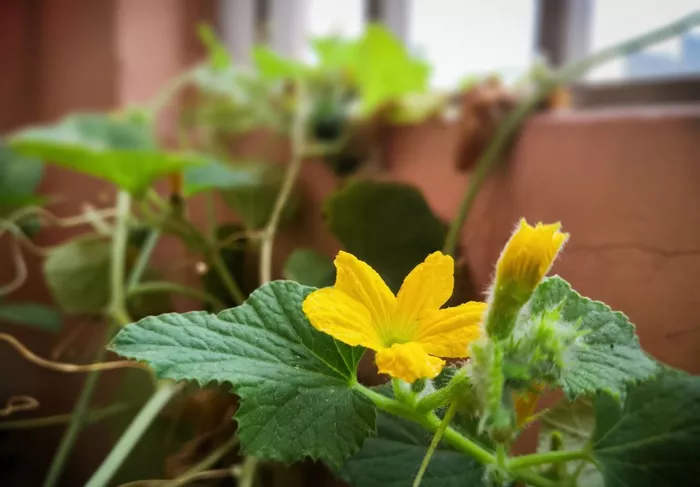Pollination is a crucial process in the life cycle of melon plants. It ensures the development of healthy and abundant fruit. Whether you are a seasoned gardener or a novice, understanding how to pollinate melon flowers can significantly enhance your garden’s productivity. This article will guide you through the essential steps and tips for successful melon flower pollination.
Understanding Melon Flower Pollination
The Importance of Pollination
Pollination is the transfer of pollen from the male part of the flower to the female part. In melons, this process is vital for fruit set. Without proper pollination, melon plants may bloom profusely but produce little to no fruit. Pollination can occur naturally through wind, insects, or manually by gardeners. Understanding the anatomy of melon flowers is the first step in mastering the art of pollination.
Anatomy of Melon Flowers
Melon plants produce both male and female flowers. Male flowers appear first and are smaller, with a single stamen that produces pollen. Female flowers have a small ovary at their base, resembling a tiny melon. This ovary will develop into a fruit only if successfully pollinated. Recognizing the difference between male and female flowers is essential for effective pollination.
Natural Pollination Methods
The Role of Bees and Other Pollinators
Bees are the primary pollinators for melon flowers. They transfer pollen from male to female flowers as they forage for nectar. To attract bees, plant a variety of flowering plants near your melon patch. Marigolds, sunflowers, and lavender are excellent choices. These plants provide a habitat and food source for bees, encouraging them to visit your melon flowers.
Environmental Factors Affecting Pollination
Weather conditions play a significant role in natural pollination. Wind can help transfer pollen, but strong winds may damage flowers. Rain can wash away pollen, reducing the chances of successful pollination. To support natural pollination, ensure your melon plants are planted in a location that is somewhat protected from harsh winds and excessive rain.
Manual Pollination Techniques
When to Hand Pollinate
Manual pollination is necessary when natural pollinators are scarce or when environmental conditions are unfavorable. This technique is particularly useful in greenhouses or during periods of heavy rain. Hand pollination ensures that pollen is transferred directly from male to female flowers, increasing the likelihood of fruit set.
Step-by-Step Guide to Hand Pollination
Identify Male and Female Flowers: Examine your melon plants to locate male and female flowers. Male flowers have a single stamen with pollen, while female flowers have a small ovary at the base.
Collect Pollen: Use a small, soft brush or cotton swab to gently collect pollen from the stamen of a male flower. Be careful not to damage the flower.
Transfer Pollen: Carefully transfer the collected pollen to the stigma of a female flower. Gently brush the pollen onto the stigma to ensure proper contact.
Repeat the Process: Continue this process with multiple flowers to increase the chances of successful pollination.
Tools and Materials Needed
For manual pollination, you will need a few simple tools. A small, soft brush or cotton swab is ideal for collecting and transferring pollen. You may also want to use tweezers to handle the flowers gently. Keeping these tools clean and dry will help ensure successful pollination.
Tips for Successful Pollination
Timing is Key
The best time to pollinate melon flowers is early in the morning when the flowers are fully open and the pollen is fresh. Pollen viability decreases as the day progresses, so early morning is the optimal time for both natural and manual pollination.
Patience and Persistence
Pollination may not always be successful on the first try. Be patient and persistent. Continue to monitor your melon plants and repeat the pollination process as needed. Sometimes, it may take several attempts to achieve successful fruit set.
Observing Flower Development
Keep a close eye on the development of your melon flowers. Female flowers with successful pollination will show signs of fruit development within a few days. If a female flower does not produce fruit, it may indicate that pollination was unsuccessful. In such cases, repeat the pollination process.
Common Challenges and Solutions
Pollination Failure
If your melon plants are not producing fruit despite blooming, pollination failure may be the cause. This can occur due to insufficient pollinators, poor weather conditions, or improper manual pollination techniques. To address this issue, ensure you are correctly identifying and pollinating the flowers. You may also want to consider introducing more pollinators to your garden.
Pest and Disease Management
Pests and diseases can affect the health of your melon plants and hinder pollination. Keep your garden free from pests by using organic pest control methods. Regularly inspect your plants for signs of disease and treat any issues promptly. Healthy plants are more likely to produce healthy flowers and successful pollination.
Conclusion
Pollinating melon flowers is a rewarding process that can significantly improve your garden’s yield. Whether through natural pollination by bees or manual pollination by hand, understanding the steps and techniques involved is essential. By following the guidelines outlined in this article, you can ensure successful pollination and enjoy a bountiful harvest of delicious melons. Happy gardening!


